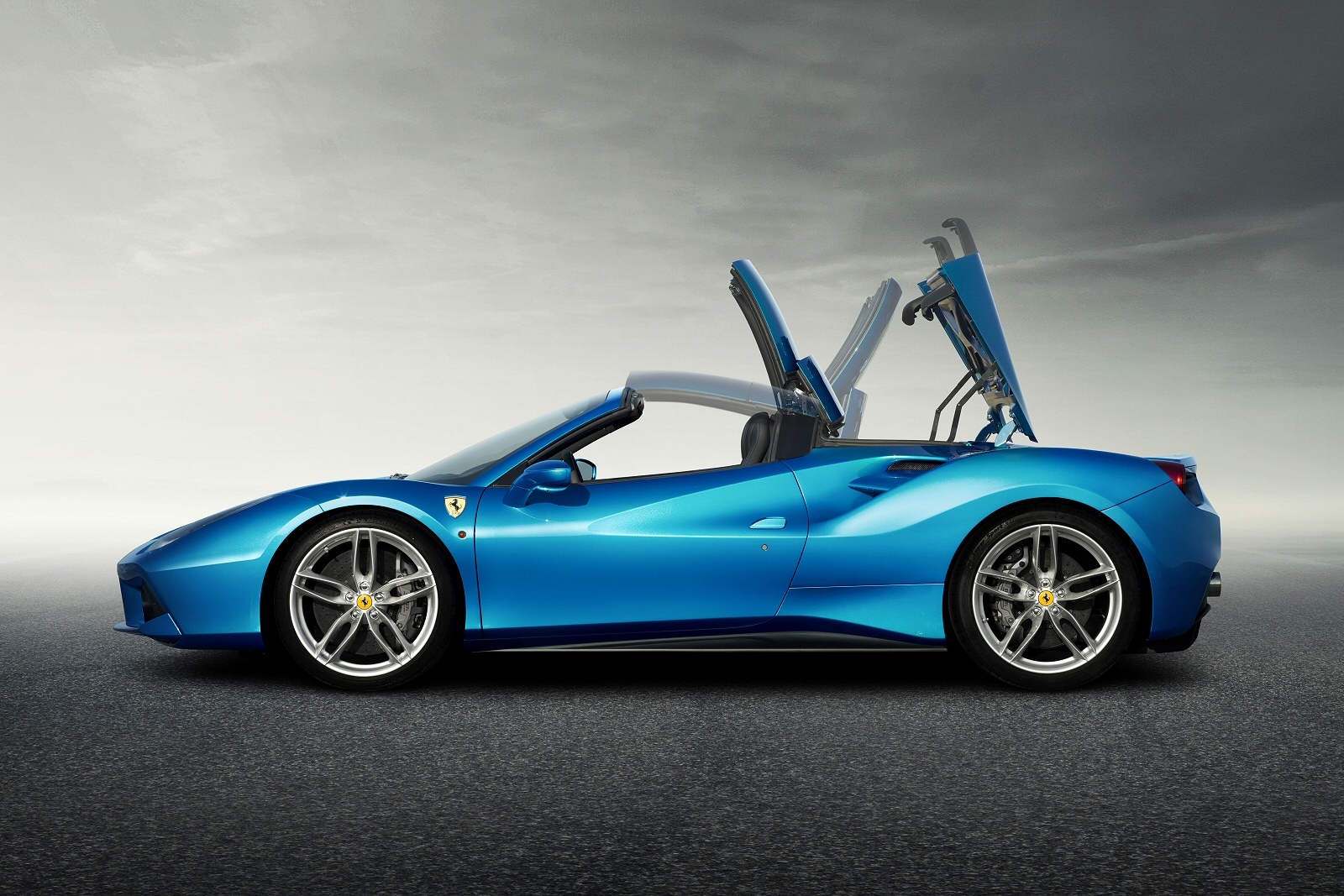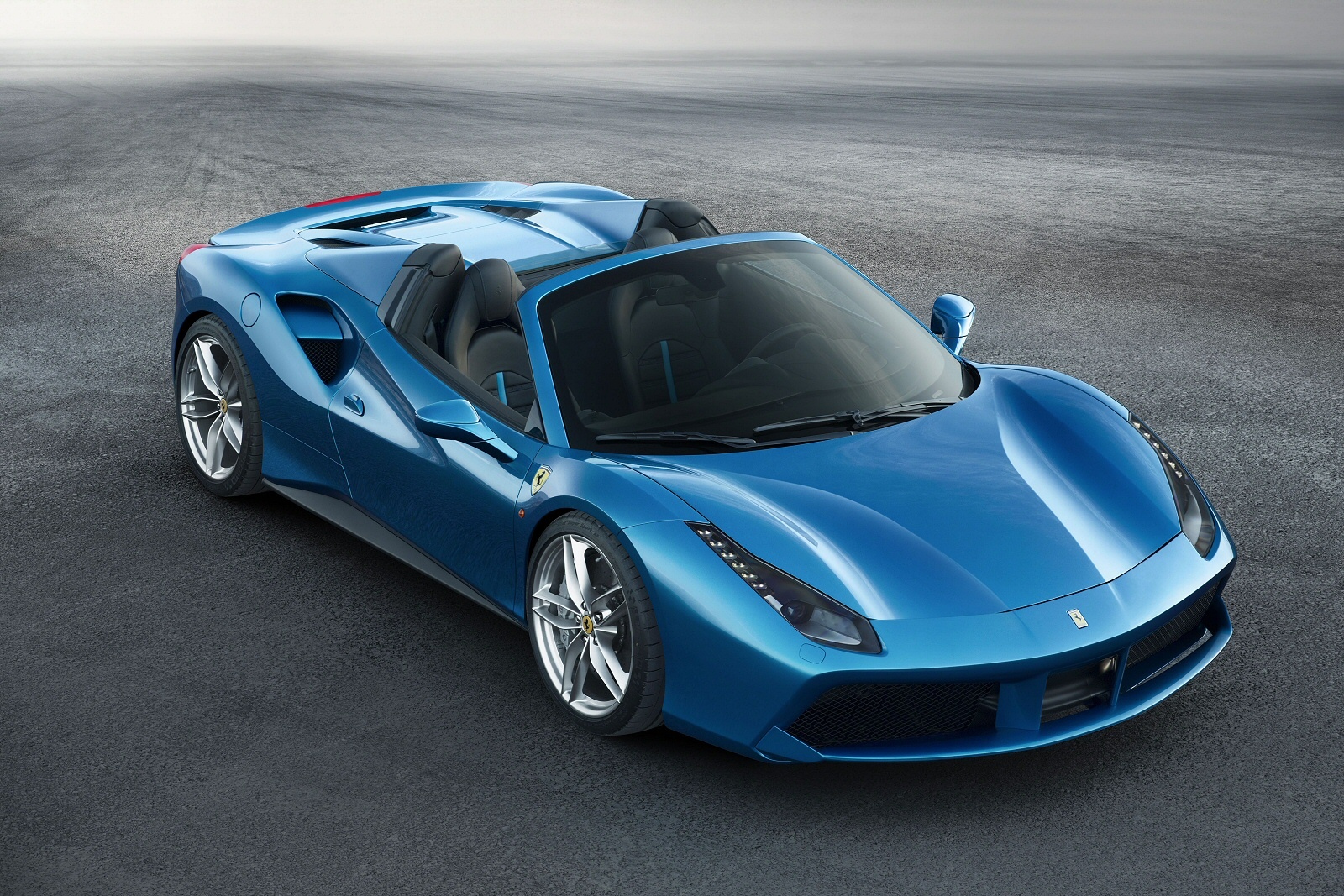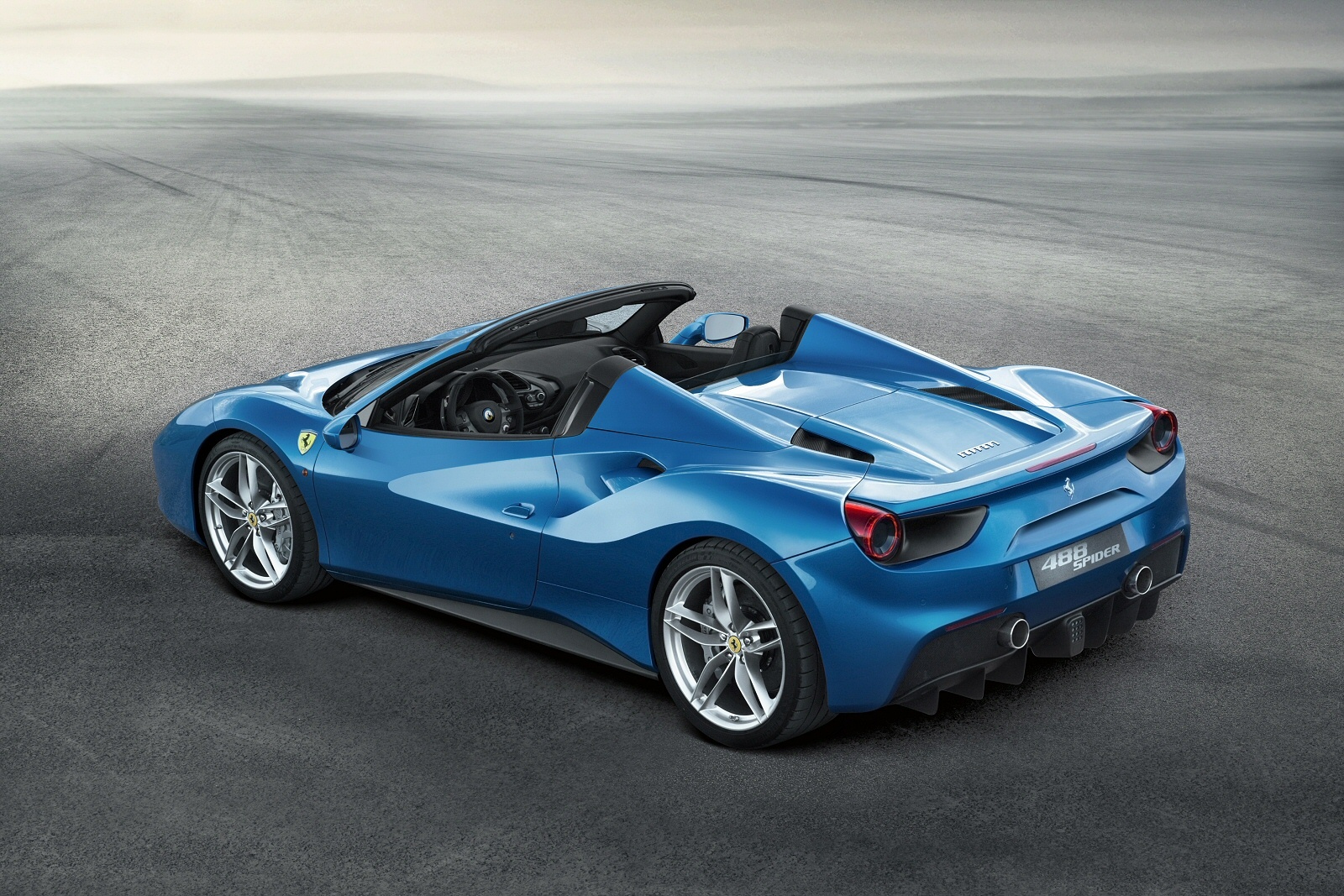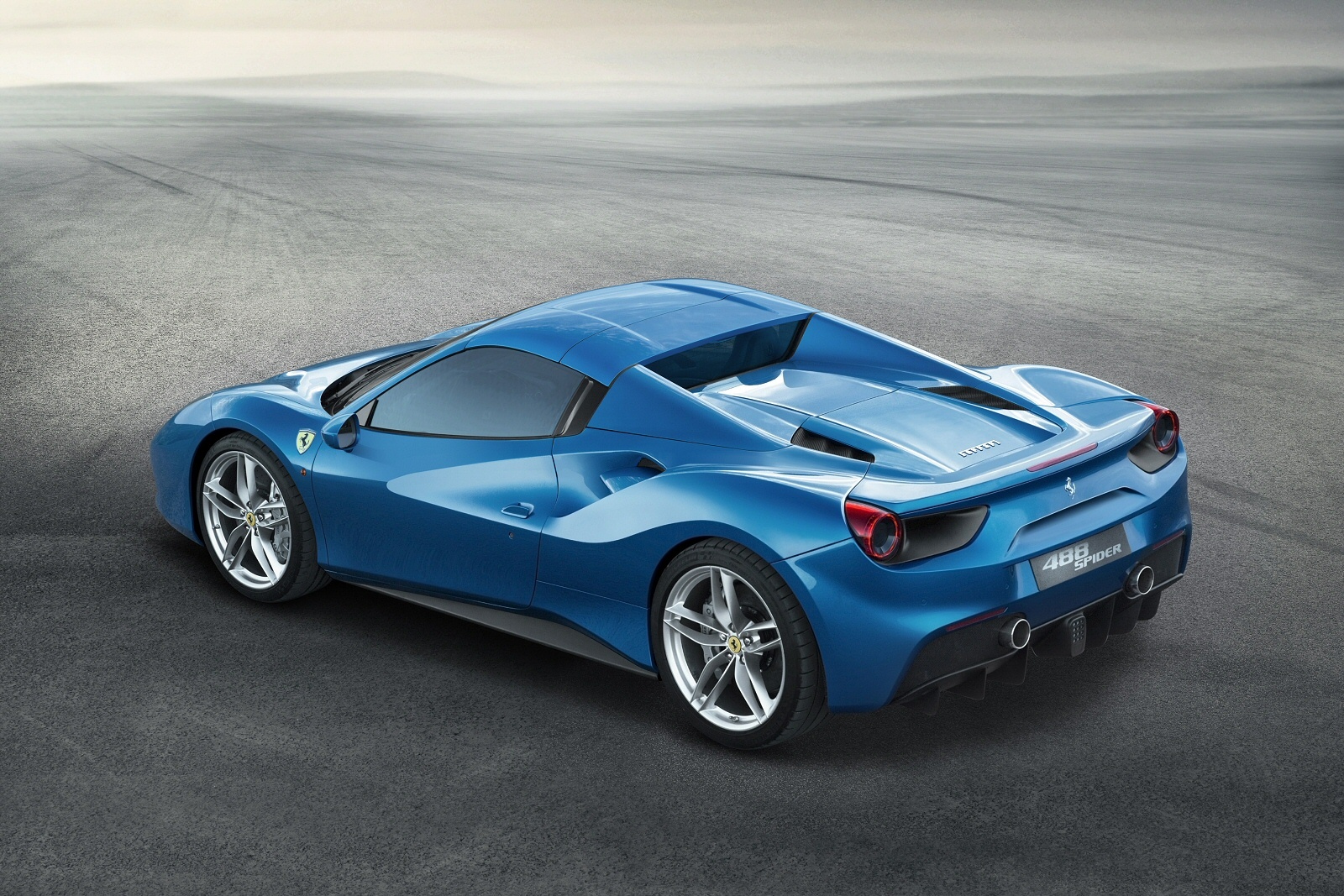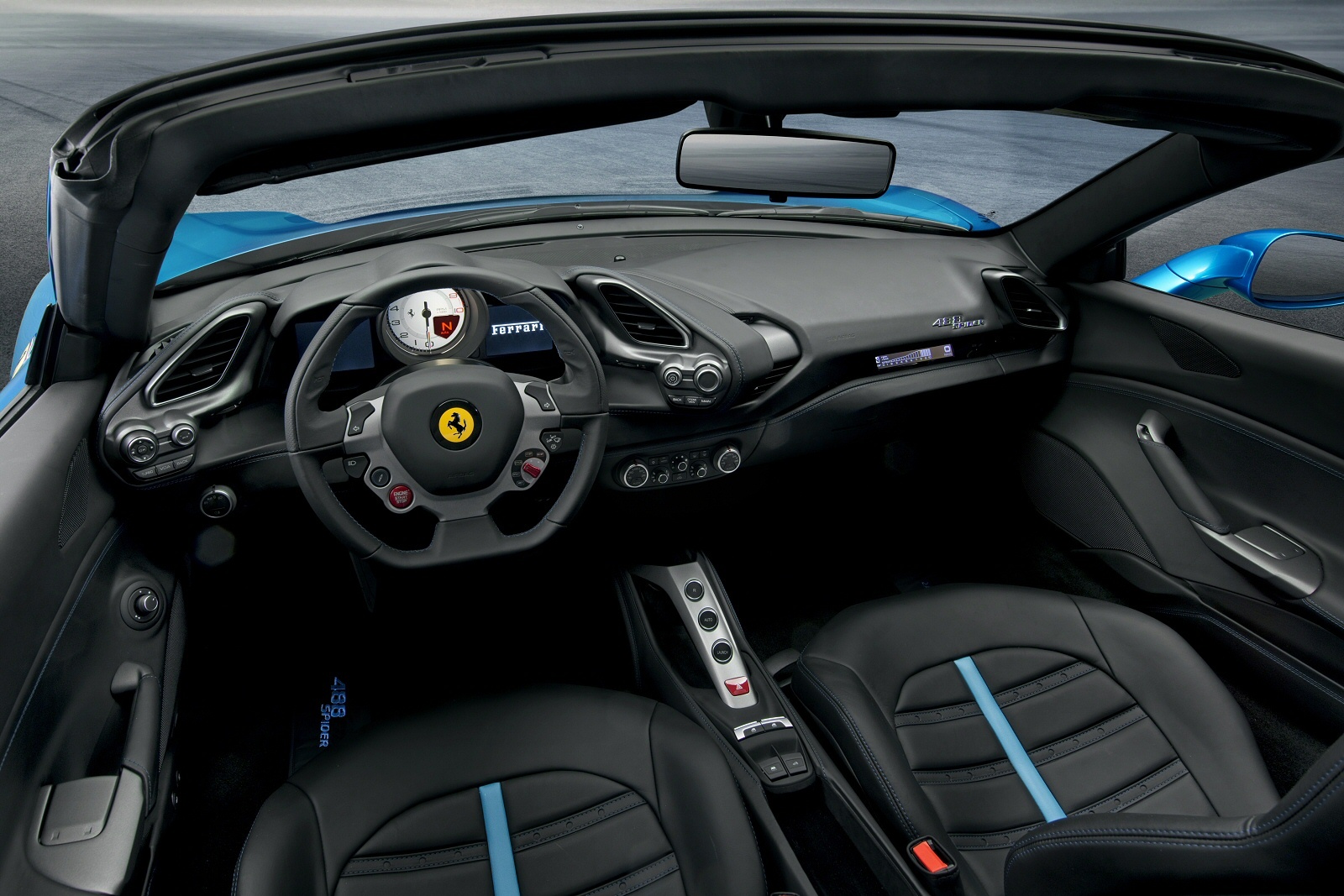Can the replacement for the brilliant Ferrari 458 Spider retain its predecessor’s magic, despite the switch to forced induction?
Extensive changes to the aerodynamics and electronic systems mean the 488 Spider moves the game on even further than the magical 458.
The aero tweaks provide more downforce without the need for any style-ruining spoilers, so its handling ability can match its monstrous performance. The SSC2 (side slip control) system allows for greater angles out of corners and is now linked to the dampers as well the E-Diff and the F1-Trac stability control system for greater control.
The most significant change, though, is the turbocharged engine. On paper, it should be incredible: the 661hp and 561lb/ft outdo the 458 by around 100hp and 160lb/ft and have less mass to propel, thanks to a small drop in kerb weight.
As with Ferrari’s smaller California T model, the 488’s engine doesn’t give all its power immediately; torque is limited in the lower gears to prevent overloading the rear tyres and the full 561lb/ft is available only in seventh gear.
This means that acceleration doesn’t fade with each higher gear – it gets stronger.
As expected with such a vast power increase and clever torque management, performance is outstanding. Try 0-62mph in three seconds dead and 124mph in 8.7 seconds before hitting a top speed of 203mph.
The figures alone are hard to fathom: the 0-124mph very nearly matches its big brother, the F12 Berlinetta, a significantly more expensive and powerful car.
Just in case you were worried that the retractable roof might affect handling, Ferrari ensured that the 488 Spider was engineered to provide as much torsional rigidity as the coupe.
Several factors had to be accounted for with the design of the Spider: the extra power and torque required chassis and electronic changes to be made to maximise the car’s potential.
Using various exotic materials, such as magnesium, allowed Ferrari to shed weight and increase the stiffness of the chassis.
The aerodynamic improvements make a significant contribution to the 488 Spider’s ability. It provides more downforce, which increases grip, braking performance and stability at high speed.
The retractable hard top can open or close in just 14 seconds and allows the driver and passenger to soak up even more of the fantastic V8 noise.
The extra chassis improvements to compensate for the lack of a structural roof ensure that no driving enjoyment or handling ability is lost. Add the aero and electronic tweaks to this and the 488 Spider looks like a formidable machine.
Perhaps Ferrari’s biggest achievement comes from its biggest challenge – overcoming the loss of response brought about by turbocharging.
The engineers have managed to reduce throttle response time to just 0.8 seconds, just a tenth more than the 458, a machine widely regarded as one of the most responsive cars ever.
The 488 Spider has been priced at just over the £200,000 mark, making it comparable in price to Spider versions of the McLaren 650S and the Lamborghini Huracan.
The car also debuts a new colour designed to enhance its forms. The Blu Corsa livery features metallic particles suspended in the paint to give the bodywork a gloss finish. Its unusual iridescent effect is created by the two-layer paintwork.
One of the handy side-effects of reducing carbon emissions is an improvement in economy.
While the average buyer may not be too worried about the cost of a few gallons of super unleaded, we’re sure they’ll appreciate the reduction in wearisome stops for fuel.
Driven very carefully, the 488 Spider can manage around 25mpg, over 3mpg up on the old 458 Spider, while emitting just over 260g/km of carbon. These figures may not seem that impressive, but, given the performance available, they’re nothing short of miraculous.
The 488 Spider does have a tough task ahead of it. The brilliant McLaren 650S Spider, with its super-light and strong carbon tub, has nearly as much power and is a little lighter. Lamborghini’s Huracan Spyder model, meanwhile, offers the advantage of 4WD.
You’d still be tempted by this Ferrari, though, were you fortunate enough to be shopping in the open-topped supercar segment. Its turbocharged engine sounds every bit as good as the previous naturally aspirated unit and produces a lot more power than the unit in the old 458 Spider did.
In short, in terms of looks, power and performance, a 488 Spider delivers everything you could want. And it’s a Ferrari. Enough said.
THE FACTS
Model: Ferrari 488 Spider
Price: Just over £200,000
Engine: 661hp V8
Performance: 0-62mph in three seconds; top speed of 203mph
Economy: 25mpg
CO2 rating: 260g/km
